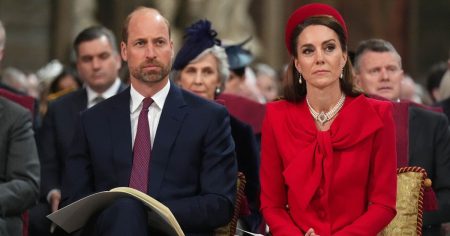Kenzie Goddard, an 18-year-old from Abernethy, recently made headlines after she filmed a TikTok video featuring a replica Glock gun outside the Perth Prison. The incident highlights the intersection of social media culture and public safety, raising questions about the appropriateness of such stunts and their potential consequences. Kenzie intended to create engaging content for her followers but inadvertently attracted the attention of law enforcement, leading to an armed police response.
The filming took place in a location that typically requires heightened security measures, especially given the proximity to a prison. When officers spotted Kenzie waving around the replica firearm, they were understandably concerned that it might be a real gun. The police acted quickly to assess the situation, employing standard procedures for incidents involving potential firearms. The decision to send an armed response unit underscores the seriousness with which law enforcement treats any perceived threat, especially in urban areas.
Through this event, the narrative about the role of social media in shaping youth behavior comes to the forefront. For many young people, platforms like TikTok are vital tools for self-expression and creativity. However, Kenzie’s misguided attempt at humor and virality underscored the potential dangers of blurring the lines between reality and the staged content often found in digital media. This incident serves as a critical reminder to both creators and viewers about the implications of actions taken for online fame.
Moreover, the unease caused by such incidents reflects broader societal concerns about gun safety and the glorification of weapons in media representations. The use of replica firearms in public spaces can provoke fear and anxiety, not only for law enforcement but also for ordinary citizens who may be unaware of the video’s context. Kenzie’s case raises important questions about the responsibilities that come with content creation and the influence of digital platforms on young people’s choices.
In the aftermath of this incident, discussions regarding regulation and best practices for social media use have gained prominence. Campaigns aimed at educating young users about the potential consequences of their actions online—and the risks associated with using replica weapons—could prove beneficial. Additionally, this event serves as a crucial point for parents and guardians to engage in conversations with their children about responsible social media usage and the pervasive risks of chasing viral fame.
Ultimately, Kenzie Goddard’s attempt to create engaging TikTok content serves as a cautionary tale about the responsibilities that come with social media interaction. As the lines between entertainment and reality continue to blur, it is crucial for young creators to recognize the potential implications of their actions—both for themselves and for the wider community. Balancing the desire for creativity and the imperative of safety will be essential as society navigates the challenges posed by evolving social media norms.














